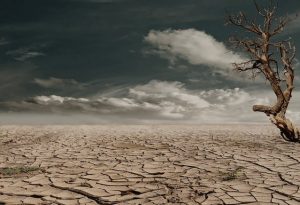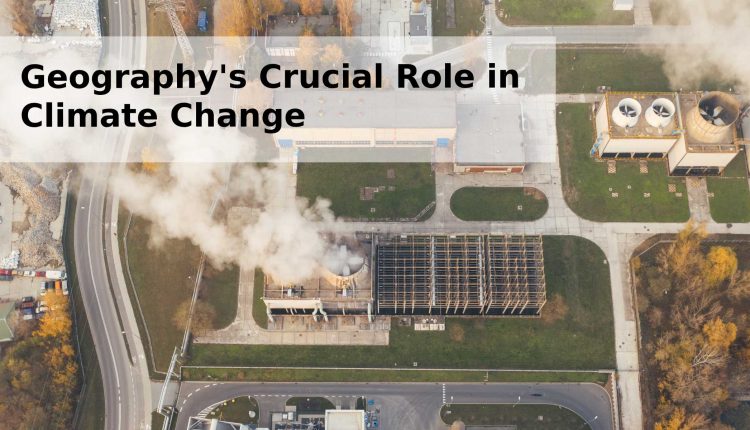Geography’s Crucial Role in Climate Change
In the face of escalating climate change concerns, our global community is increasingly focused on finding effective mitigation strategies. While technological advancements and policy changes play pivotal roles, the often-overlooked element of geography can significantly contribute to successful climate change mitigation efforts. Through this comprehensive exploration, we aim to pinpoint how geographical factors can shape and influence our approach to lessen the impacts of climate change.
Understanding the Geographic Landscape
Geographical Diversity: One of the fundamental aspects of geography lies in the diversity of landscapes across the globe. From towering mountain ranges to expansive coastlines, each region possesses unique characteristics that demand tailored strategies. Understanding this diversity allows us to craft targeted solutions that address specific environmental challenges.
Climate Zones and Their Impact: Geography determines the distribution of climate zones, influencing the type and intensity of weather patterns experienced in different areas. By recognizing these variations, we can develop region-specific strategies to combat climate change. For instance, coastal areas may focus on rising sea levels, while inland regions grapple with droughts and desertification.
Harnessing Natural Resources
Renewable Energy Opportunities: Geography plays a crucial role in the availability of renewable energy sources. Solar-rich regions can harness the power of the sun, while windy landscapes become ideal locations for wind farms. By strategically placing renewable energy infrastructure based on geographical advantages, we can maximize energy generation and minimize the reliance on fossil fuels.
Hydroelectric Potential: Rivers and water bodies, dictated by geography, offer immense potential for hydroelectric power generation. Understanding the geographical layout of river systems allows us to identify optimal locations for dams and hydroelectric plants, contributing to sustainable energy production.

Biodiversity Conservation Strategies
Ecosystem Services: Geography shapes ecosystems, determining the services they provide. Forests, wetlands, and other natural habitats offer vital ecosystem services, including carbon sequestration and climate regulation. Preservation and restoration efforts targeted at these areas can enhance their ability to reduce climate change impacts.
Biodiversity Hotspots: Certain geographical regions are biodiversity hotspots, hosting a vast array of plant and animal species. Protecting these areas becomes crucial as diverse ecosystems contribute to ecological balance and resilience. Conservation initiatives aimed at preserving biodiversity play a significant role in climate change alleviation.
Climate Change Adaptation Measures
Coastal Management Strategies: Geography heavily influences vulnerability to climate change, particularly for coastal regions. Implementing effective coastal management strategies such as building resilient infrastructure and restoring natural buffers like mangroves. It becomes imperative to mitigate the impacts of rising sea levels and extreme weather events.
Mountainous Regions and Water Security: Mountainous terrains, driven by geography, are critical for water supply. Climate change can disrupt water availability, affecting both mountainous and downstream areas. Implementing sustainable water management practices in these regions ensures a stable supply for communities and ecosystems.

The Human Element in Geographical Mitigation
Community Engagement and Education: Geography is not only about physical landscapes but also about the communities inhabiting them. Engaging local communities and providing education on sustainable practices tailored to their geographical context fosters a sense of responsibility. Empowered communities are more likely to actively participate in climate change.
Policy Frameworks Aligned with Geography: Governments and policymakers must recognize the geographical nuances of their regions when formulating climate change policies. Tailoring regulations to the specific challenges posed by geography ensures more effective implementation and greater success in mitigation endeavors.
Conclusion: Navigating the Geographical Path to Climate Resilience
In conclusion, geography emerges as a silent yet powerful player in the realm of climate change. By understanding and leveraging geographical factors, we can navigate a more effective path toward environmental sustainability. From harnessing renewable energy to preserving biodiversity hotspots, geographical considerations offer a roadmap for crafting targeted and impactful solutions. As we embark on this collective journey, let us embrace the geographical dimension of climate change mitigation, ensuring a harmonious coexistence between humanity and the planet.
Highlighting the importance of the above topics, the upcoming International Conference on Geographic Perspectives on Climate Change Mitigation in Urban and Rural Environments (GCUE) by IEREK which will be held in Italy from the 25th to the 27th of June 2024 in collaboration with The University of Salento will provide a vital platform for global discussions. Know more about the GCUE Conference Here.



